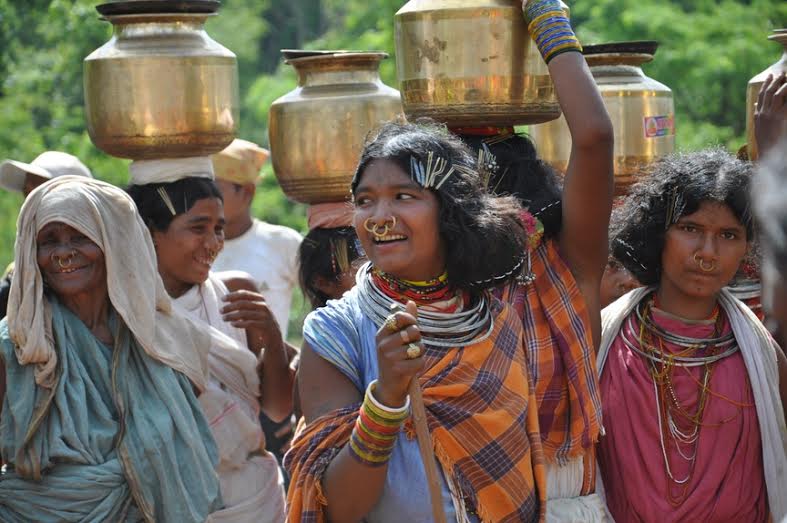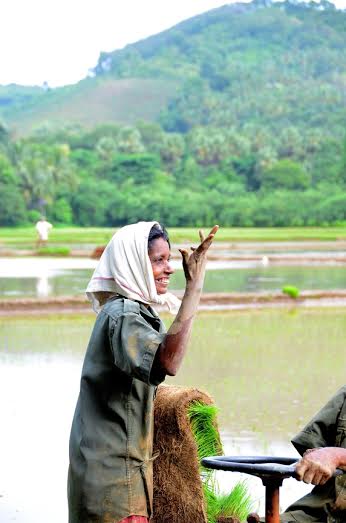P. Sainath is the 2007 winner of the Ramon Magsaysay Prize, Asia’s most prestigious prize. He won the World Media Summit Global Award for Excellence 2014, in Public Welfare reporting. He was also the first reporter in the world to win Amnesty International’s Global Human Rights Journalism Prize in its inaugural year in 2000. He has taught at journalism schools in India and abroad, teaching and mentoring students as well as training media professionals.
He will deliver a lecture on Sunday March 15, 2015, 2pm.
Background information of the project/website?
With 833 million people and 780 living languages, rural India is a continent within a subcontinent. Yet, in the media, it barely exists. When it figures, it is usually poorly covered. This, despite having immense journalistic resources and skills. Media owners do not see rural India as a source of revenue and therefore give it little or no importance. Yet, this is the most complex part of planet Earth. We need to know and understand it. Please, for more details, see The Story of PARI: http://www.ruralindiaonline.org/about/
How do you define rural India in PARI ?
Very broadly. In the Census of India, anything not defined as ‘urban’ is rural ! We basically include rural towns as well. And we go one step further in pursuing the ‘rural.’ We end up having a huge section which really lies within urban India. You can see this category called The Rural In The Urban. This tracks migrants – rural migrant communities within the cities and towns; many of whom still have strong village links and journey back and forth. See: http://www.ruralindiaonline.org/categories/the-rural-in-the-urban/ The past decade and a half have seen the largest migrations in independent India’s history. None of these stories are told in any significant way in the corporate media.
Why is this so important to document?
I guess rural India accounting for over two-thirds of the naton’s population is justification enough in itself. We don’t ask why it is so important cover the IPL as extensively as we do, or Bollywood, or the Lakme Fashion Week or stuff like that. Do we really have to justify the importance of rural India?
Our nation’s greatest legacies are eroding rural India ruptures. No other country has a fraction as many schools of weaving, art, pottery, other crafts, epic stories, skills. So many of these are disintegrating or vanishing. Does one need to discover a reason for this being important or is that self-evident? Our approach to it is that we cover “The Everyday Lives of Everyday People.†That’s where I believe the most important stories lie.
One generation has lost its connection with rural India, with its own roots. Another grows up not knowing such connections or links existed at all. Barring 1-2 per cent of the population, almost everyone was a villager 4-5 generations ago. PARI hopes to connect one-third of Indians to the other two-thirds amongst whom their original roots lie.
Who are the People behind this? Are the any sustainability issues?
This is a volunteer-driven organisation. I set it up. So you could, to use your words, say I am ‘behind this.’ I have been a journalist 35 years, 22 of those a full-time rural reporter, the only Rural Affairs Editor in the Indian media till I quit that post last July to work on PARI full-time. In 2011, I set up the CounterMedia Trust (CMT), with PARI as its main projected activity. The Trust also created a CounterMedia Network that created the volunteer space for PARI. As we began, I brought in lots of my former students, now professional journalists working in scores of newspapers, magazines, TV channels, websites…..I have trained a very large number of journalists over the past 27 years or so. They remain with their organisations and volunteer work for us. Most are quite young. Some are very experienced journalists who give us the good journalism they’ve done that would never fly in their own newspapers or channels.
The idea is to increasingly bring in a larger ad larger number of people and to create a platform where increasingly people can tell their own stories. We launched this website on Dec. 20, 2014. In two months, another 1000+ volunteers have come to us online (this flow – we don’t know most of them), showing us how much idealism there is and how much sincere people worry about their less privileged fellow-citizens and human beings.
We’re in fact finding it difficult with a volunteer flow of 150 a week! We need them, we need more and more of them. Most are highly skilled and from very diverse backgrounds. But we need to be able to manage such a large number where the core group consists of 15 or so individuals all of whom do full-time jobs. Every one of them convinced of the need and importance to cover and understand rural India. Our core group includes professional journalists, techies, photographers, film-makers, managers, and others.
What is your source of funding ?
Very limited, alas! It took 2-3 years of work before we felt ready to launch. The principle we followed was that we would not seek a paisa from anyone until the site was up and the public could see what they are being asked to support. So till Dec. 20, we took no money from anyone outside the core group and the bulk of what was spent between 2011 and 2014 December came out of the money of some of my journalism awards and prizes. After Dec. 20 we put up a call for donations and invited the public to contribute.
However we have placed ourselves under restrictions that make anything we raise small and limited. We do not seek direct government or corporate grants and stay away from those.
We hope we will succeed in crowd-sourcing. We haven’t done so yet, but we’d like to persist with that effort.
But money is not the only ‘funding.’ If you read our ‘Get Involved’ page, you’ll find that donating money is only one amongst many forms of support we’re seeking. http://www.ruralindiaonline.org/contribute/
Some of the most talented techies in the world have given us countless free hours of work, without billing us for a single hour of effort. Film-makers, photographers, writers, editors, journalists have given us their work free of charge. Lawyers and accountants have given us their time and services without charging us a paisa - all of which confirms once again that there is so much goodwill for this seemingly crazy venture on rural India. For those who feel they can best support us with monetary contributions, they can see: https://www.ruralindiaonline.org/donate/
Can you share some powerful/compelling narratives from the website?
Hard to isolate a few, there are so many. Remember that we combine audio, video, still photo, text articles and are even building an online research library. Have a look at our launch video: of a 21 year old dalit boy who has emerged the only male dancer in Tamil Nadu to become a master of both bharatanatyam AND folk dance. (you’ll find videos and a story on him). http://www.ruralindiaonline.org/articles/kali-the-dancer-and-his-dreams/
Or our video on a potter in Bengal, from the village famous for its red terracotta horses. PARI’s approach is not simply to dwell on his product but on his process of labour. Right from the time you see him digging in a ditch after the rains for a clay that disappearing. http://www.ruralindiaonline.org/articles/baked-earth/ Or even our fully digitised photo exhibition on women and work: http://www.ruralindiaonline.org/categories/visible-work-invisible-women/ Or the latest tiny text story (with photos, always with photos, we are a vidually-driven site) on Biswas and the bamboos on his bike, an everyday story of everyday people:
http://www.ruralindiaonline.org/articles/biswas-and-the-bamboos-on-his-bike/ Do visit the site, you’ll find every story and narrative compelling.



